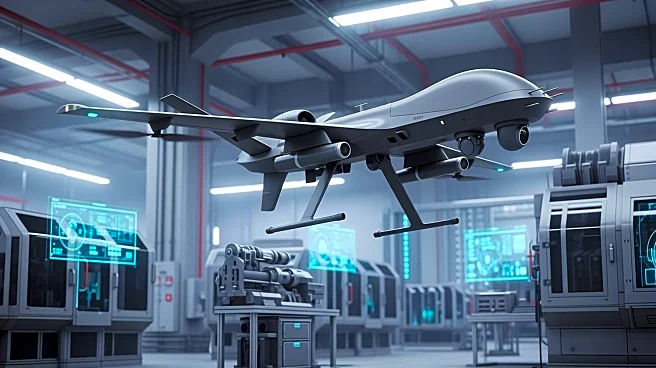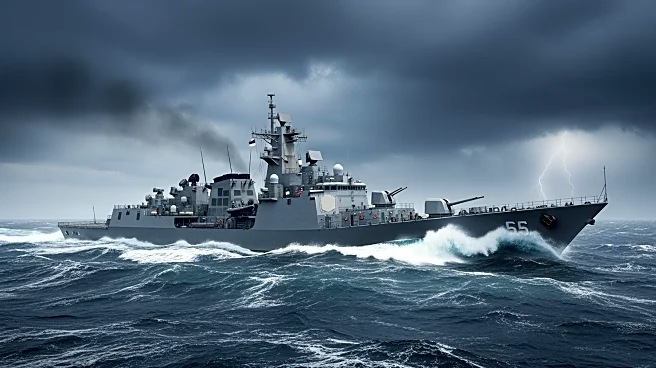What's Happening?
The U.S. military is reportedly at risk of losing a potential conflict with China due to its diminished production capacity and reliance on outdated military strategies. According to recent analysis, the
U.S. military, while technologically advanced and battle-tested, may struggle to sustain long-term warfare against China, which has become a global leader in manufacturing, particularly in drone production. The current geopolitical tensions echo the dynamics seen in the ongoing Russia-Ukraine conflict, where industrial capacity and technological adaptation have played crucial roles. The U.S. has been criticized for its lack of shipbuilding capabilities, with China producing over 50% of the world's ship tonnage compared to the U.S.'s 0.1%. This disparity highlights the challenges the U.S. would face in maintaining naval dominance in the Pacific Ocean, a critical theater in any potential conflict with China.
Why It's Important?
The potential inability of the U.S. to sustain a prolonged conflict with China has significant implications for global power dynamics and U.S. national security. The U.S.'s current military strategy, which emphasizes traditional combat valor, may not be sufficient in modern warfare, where industrial capacity and technological innovation are paramount. The reliance on outdated strategies could lead to strategic disadvantages, affecting the U.S.'s ability to project power and protect its interests globally. Furthermore, the U.S.'s strained relationships with its allies could exacerbate these challenges, as cohesive alliances are crucial for deterring or engaging in conflicts with major powers like China.
What's Next?
To address these challenges, the U.S. may need to invest in rebuilding its industrial base, particularly in shipbuilding and drone production, to match China's capabilities. Strengthening alliances and fostering international cooperation will also be essential to counterbalance China's growing influence. The U.S. military might need to shift its focus from traditional combat strategies to embracing technological advancements and industrial capacity to ensure readiness for future conflicts. These steps could help the U.S. maintain its strategic edge and deter potential adversaries.
Beyond the Headlines
The situation underscores a broader shift in global military dynamics, where economic and industrial capabilities are becoming as crucial as military prowess. The U.S. must navigate these changes carefully to maintain its position as a global leader. This development also raises ethical and strategic questions about the future of warfare, including the role of technology and the importance of sustainable industrial practices in national defense.











